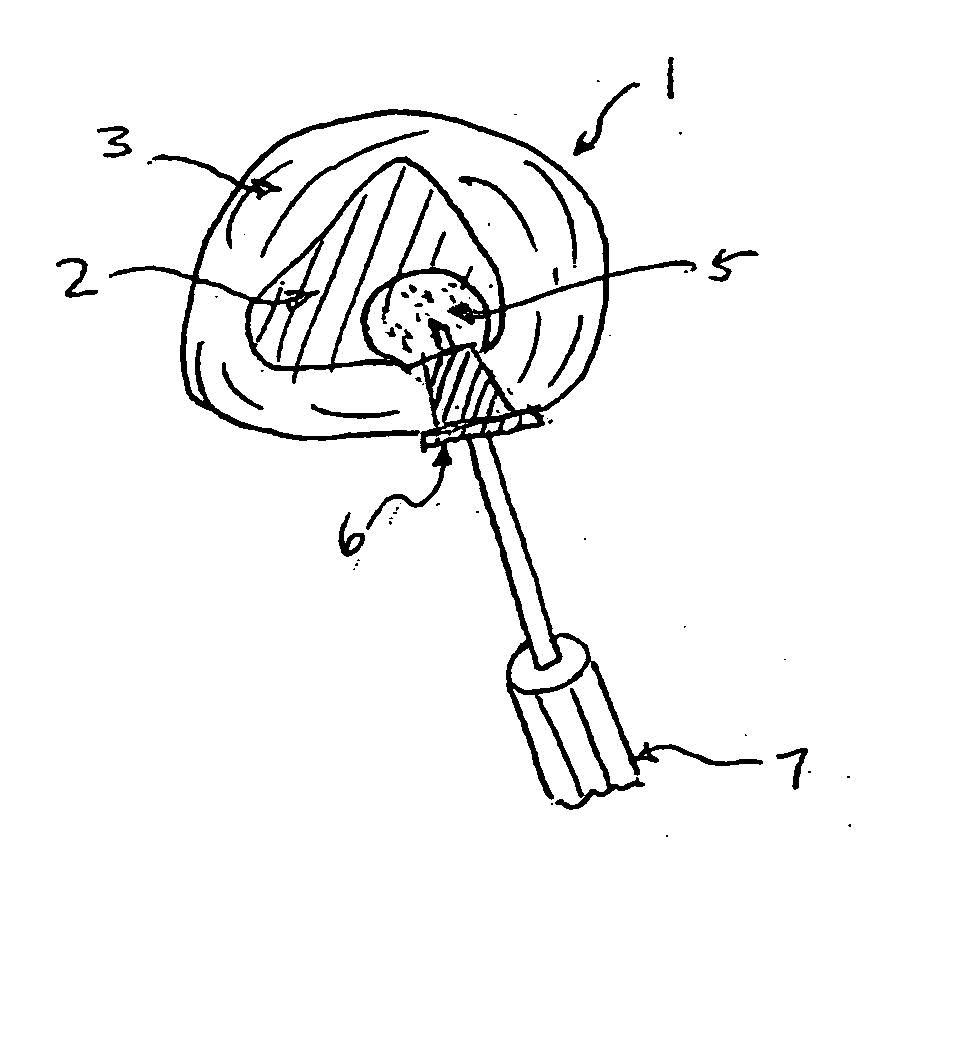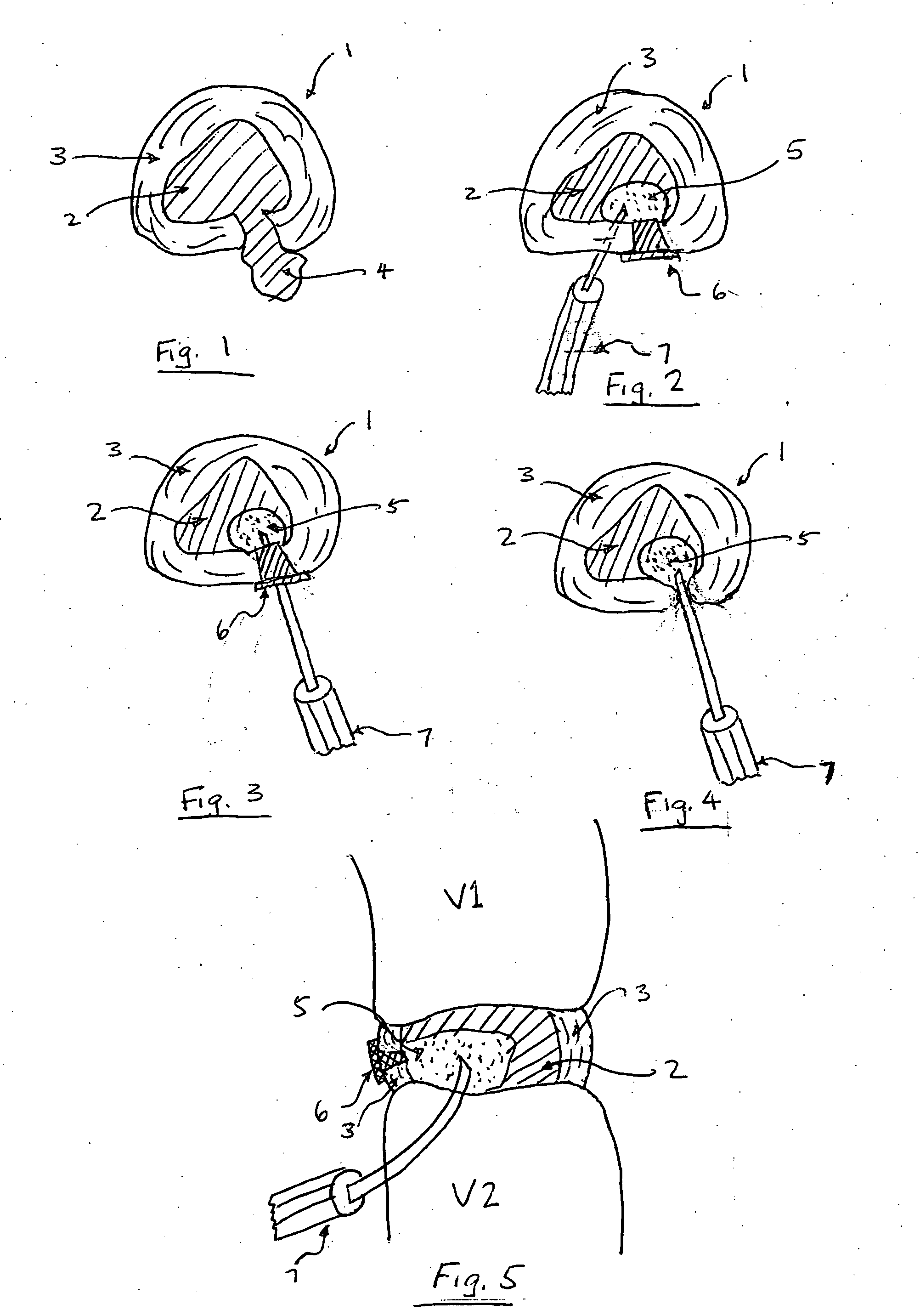Degenerative disc regeneration techniques
a technology of degenerative discs and discs, applied in the field of intervertebral disc repair and regeneration, can solve the problems of high il-10 production, retard the flow of nutrients into the disc, and retard the flow of waste products out of the disc, so as to reduce tnf-a production and il-10 production.
- Summary
- Abstract
- Description
- Claims
- Application Information
AI Technical Summary
Benefits of technology
Problems solved by technology
Method used
Image
Examples
example 1
[0054] A mixture of glycine, concentrated monocytes and fibrin glue is injected into a degenerating disc (or outside the disc for sciatica). The fibrin glue isolates the glycine and monocytes from the disc material, thereby allowing in vivo culturing for a day or so. When the fibrin glue disappears after about 40 hours, the cultured monocytes will encounter disc-related antigen and produce IL-10. The IL-10 will then act as an anti-inflammatory in the disc.
[0055] In addition, glycine is an inhibitor of glutamate and it has been reported that glutamate may leak out of a degenerating disc and cause pain. In our process, the glycine that leaves the fibrin glue will inhibit the pain-causing actions of glutamate.
example 2
[0056] A portion of the degenerating disc is excised and the antigenic cells removed. Glycine is combined with the antigenic cells and the combination is re-injected into the disc.
[0057] It should be noted that sustained-release forms of glycine may be used. For example, glycine will have the effect of significantly reducing TNF-a production within the disc for controlled periods (or from the extruded nucleus pulposus in sciatica) while only slightly lowering IL-10 production. Glycine can be made a controlled release substance by combining with such items as by adding to typical carriers including microspheres, foams, gels, and other much materials known in the art that permit sustained release kinetics.
PUM
| Property | Measurement | Unit |
|---|---|---|
| Degradation properties | aaaaa | aaaaa |
| Bioactive | aaaaa | aaaaa |
Abstract
Description
Claims
Application Information
 Login to View More
Login to View More - R&D
- Intellectual Property
- Life Sciences
- Materials
- Tech Scout
- Unparalleled Data Quality
- Higher Quality Content
- 60% Fewer Hallucinations
Browse by: Latest US Patents, China's latest patents, Technical Efficacy Thesaurus, Application Domain, Technology Topic, Popular Technical Reports.
© 2025 PatSnap. All rights reserved.Legal|Privacy policy|Modern Slavery Act Transparency Statement|Sitemap|About US| Contact US: help@patsnap.com


